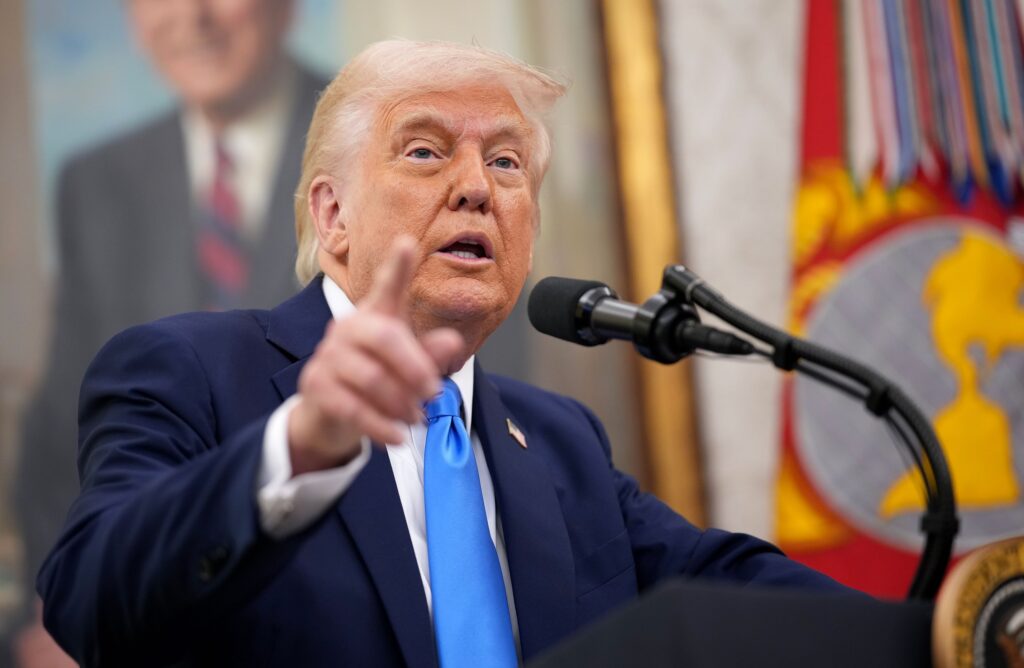President Donald Trump’s promised tariffs are a day away – and they’ll go into effect sooner than some had expected. As in, immediately, the White House said Tuesday.
Although many details remain unknown, perhaps even to Trump himself, the administration’s “Liberation Day” trade policy announcement is expected to be the most aggressive tariff move yet by the most tariff-obsessed president in modern history. Trump is meeting with his trade team Tuesday and the tariffs he announces at a Rose Garden ceremony at 4 pm ET Wednesday will go into effect “immediately,” White House Press Secretary Karoline Leavitt said Tuesday a press briefing.
Trump has vowed to aggressively slap tariffs on US imports as a catch-all solution to almost any problem. And the president has kept his promise — so much so that it’s freaking out investors, economists, CEOs and a growing segment of the population who fear the import taxes will do more harm than good.
But Trump’s tariff efforts so far might pale in comparison to what’s coming next.
Trump told reporters late Monday that he’d “settled” on a plan for sweeping new tariffs to be announced midweek, catching some White House officials by surprise: If the president had indeed arrived at a final decision for the tariffs, it hadn’t yet been widely shared inside the building.
Still unclear is whether Trump plans to levy individual tariff rates on all US trading partners; put tariffs on only some countries; or apply a universal tariff — perhaps as high as 20% — on all imports. Trump’s advisers are publicly supportive of Trump’s tariff agenda, but they differ in approach and scope behind the scenes.
A 20% universal tariff — combined with full retaliation from other nations on US goods — would be a “worst-case scenario” for the US economy, Moody’s Analytics chief economist Mark Zandi told CNN on Tuesday.
An economic ‘wipeout’
A Moody’s simulation found that such an escalation in the trade war would wipe out 5.5 million jobs, lift the unemployment rate to 7% and cause US GDP to drop by 1.7% from peak to trough.
“If that happens, we get a serious recession. It’s a wipeout for the economy,” Zandi said, adding that he thinks Trump will announce a less extreme tariff regime to avoid such damage.
Regardless of what Trump ultimately announces, all the proposals would likely be historic.
“We’ve never seen anything like this. It’s unprecedented and radical,” said Erica York, vice president of federal tax policy at the Tax Foundation, a right-leaning think tank.
While previous presidents have lobbed tariffs on steel, tires, electric vehicles or other goods, York said those actions are “nowhere close” to what Trump is setting the stage for on Wednesday.
There are multiple ways Trump’s Liberation Day announcement could play out. One idea is that reciprocal tariffs would start first with the “Dirty 15,” or the 15% of nations that the United States has the biggest trade deficits with. That idea, suggested by Treasury Secretary Scott Bessent, would represent a massive escalation in the trade war.
Still, crucial details of the announcement remain unclear, including how high tariff rates will go and on which products.
Mark Carney: Canada must change its economy as tariffs loom
Tariffs on all $3.3 trillion of imports?
Trump has pushed back on tariffs on the “Dirty 15,” instead, throwing his weight behind something far broader.
“You’d start with all countries, so let’s see what happens,” Trump said Sunday. “I haven’t heard a rumor about 15 countries, 10 or 15.”
That suggests Trump’s Liberation Day tariffs won’t be reciprocal as much as they will be universal, reviving a campaign promise (that alarmed economists) to put tariffs on all imports from all nations.
In other words, tariffs would be applied to roughly $3.3 trillion of imported goods, according to last year’s federal trade data.
This is miles away from what Trump did during his first term.
During his entire first four years in the White House, Trump put tariffs on about $380 billion worth of imports, according to the Tax Foundation.


